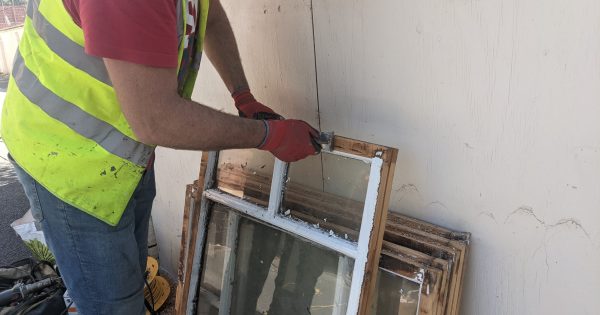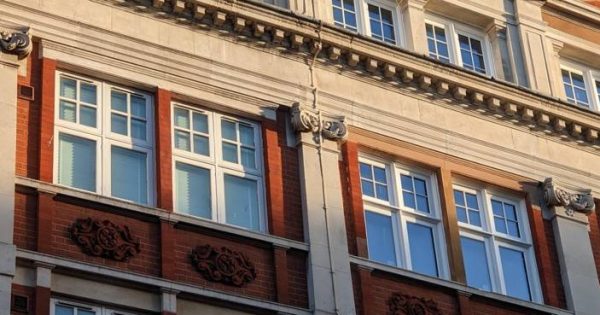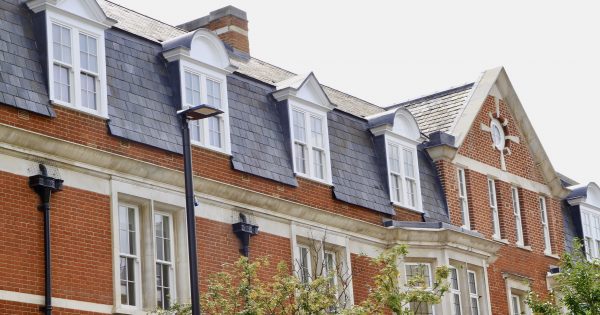Fri May 30
Restoring sash windows is a critical consideration for developers working on large-scale refurbishment and restoration projects, especially in period buildings and conservation areas.
Sash windows are not only architectural treasures but also integral to a building’s historical and aesthetic value. Knowing when to restore and when to replace these features is essential for balancing cost, sustainability, compliance, and visual appeal.
The importance of sash windows in large-scale developments
Sash windows, particularly traditional box sash windows, are a defining feature of many heritage buildings throughout the UK. Their elegant proportions, original features, and distinctive joinery contribute to the unique character of period properties. In cities like London, where conservation areas are prevalent, preserving original sash windows is often a regulatory requirement and a mark of best practice in heritage-led refurbishment.
Assessing the condition: The first step in decision-making
Before deciding whether to repair or replace sash windows, a thorough assessment is essential. This process involves evaluating the window frame, sashes, glazing, putty, sash cords, parting bead, and window sill for signs of wear, damage, or decay.
Common indicators that sash windows require attention include:
- Draughts and rattling sashes
- Broken or frayed sash cords
- Rotten or decayed timber sashes or window frames
- Fogging or condensation between panes of glass (in double glazing)
- Difficulty opening or closing the window
- Loose or missing putty
- Damaged or missing parting bead
A detailed survey by a specialist will help determine the extent of repairs required and whether restoration is viable or replacement is necessary.
What does sash window restoration involve?
Restoring sash windows is a meticulous process that aims to return them to their former glory while improving performance. The steps typically include:
- Removing sashes from the frame
- Carefully extracting old glass and putty
- Cleaning joints and removing damaged timber
- Splicing in new, matching timber where needed
- Filling cavities with epoxy resin for durability
- Sanding, priming, and repainting timber
- Reglazing with new or original panes of glass
- Replacing or refurbishing hardware such as sash lifts and cords
- Installing draught proofing and, where appropriate, upgrading to double glazing or secondary glazing
This process retains as much of the original material as possible, preserving the window’s character and complying with conservation requirements.
Why opt for restoration?
- Cost-effectiveness: Restoring sash windows is often significantly less expensive than full replacement, especially for minor or localised issues. Repairs such as fixing sash cords, reglazing, or treating isolated rot can extend the lifespan of existing windows at a fraction of the cost of new joinery.
- Sustainability: Restoration reduces landfill waste and the need for new materials, making it a more sustainable choice. Upgrades such as draught proofing and double glazing can be incorporated during restoration to improve energy efficiency without compromising heritage value.
- Aesthetics and compliance: Retaining original sash windows preserves the authentic appearance of period buildings, which is particularly important in conservation areas and listed properties. Restoration is often the only compliant solution for maintaining original features.
- Durability: With proper care and timely repairs, original timber sash windows can last for centuries, often outlasting modern alternatives.
When is full replacement necessary?
While restoring sash windows is the preferred route for many projects, there are situations where replacement is the best way forward:
- Severe structural damage: If the window frame or sashes are extensively decayed, warped, or structurally compromised, restoration may not be viable. Full replacement ensures safety, longevity, and performance.
- Non-original or poor-quality replacements: If previous replacements were done with unsuitable materials (like uPVC) or poor-quality joinery, installing new timber sashes in keeping with the building’s style may be warranted.
- Upgrading performance beyond restoration: In some cases, achieving modern standards for insulation, security, or acoustic performance may only be possible with bespoke new sash windows, particularly for large developments where uniformity and compliance are crucial.
TRC Contracts manufactures and installs Heritage sash windows designed to match original profiles and detailing, ensuring replacements are sympathetic to the building’s character and compliant with conservation guidelines.
Key considerations for developers
Balancing aesthetics, sustainability, and compliance
Developers must weigh several factors when deciding between restoration and replacement:
- Aesthetic integrity: Original sash windows and their features, such as glazing bars, putty lines, and sash lifts, are often irreplaceable. Restoration preserves these details.
- Sustainability goals: Restoring sash windows supports environmental objectives by reducing waste and conserving resources.
- Building regulations and conservation: In conservation areas or listed buildings, restoration is often mandated or strongly preferred. Any replacement must be like-for-like and may require planning consent.
- Cost and programme: Restoration is generally more cost-effective and less disruptive than wholesale replacement, particularly when scaffolding and access are considered for large developments.
- Performance upgrades: Draught proofing, secondary glazing, and double glazing can be integrated into restored sash windows, improving comfort and efficiency without sacrificing heritage value.
The role of professional expertise
Large-scale sash window restoration requires specialist knowledge, skilled joinery, and an understanding of both traditional techniques and modern performance requirements. TRC Contracts brings over 30 years of experience and a team of more than 50 experts to every project, working closely with architects, contractors, and clients to deliver bespoke solutions at scale.
Frequently asked question
How can you tell if a sash window is worth restoring or must be replaced?
A sash window is a good candidate for restoration if the majority of the timber is sound, the frame is structurally stable, and the original features can be retained. If the timber is severely decayed or the window cannot be made weather-tight, replacement may be necessary.
The restoration process in detail
In situ restoration
For large developments, restoring sash windows in situ is a great way to minimise disruption. The process involves:
- Careful removal of sashes and panes
- Using a heat gun to strip old paint and putty
- Repairing or replacing damaged timber with matching joinery
- Filling cavities with epoxy for strength
- Reglazing and resealing with modern or traditional putty
- Reassembling the window with new sash cords, parting bead, and draught proofing
Upgrading for modern performance
Modern requirements for energy efficiency and comfort can be met by:
- Installing double glazing or secondary glazing within existing frames
- Adding draught proofing systems to eliminate rattles and cold spots
- Upgrading ironmongery for improved security and ease of use
These upgrades can be seamlessly integrated during restoration, preserving the window’s appearance while delivering modern performance.
Making the right choice for your development
Restoring sash windows is often the best way to preserve the unique character, sustainability, and value of period buildings, especially in conservation areas or when original features are still present. However, full replacement is sometimes necessary to address severe damage or meet specific performance requirements.
For developers, the key is a thorough assessment and a partnership with a trusted specialist. TRC Contracts offers unrivalled expertise, bespoke joinery, and a proven track record on some of the UK’s most prestigious projects.
If you are planning a large-scale refurbishment or restoration project and need expert guidance on restoring sash windows, contact TRC Contracts today. Our team can provide a comprehensive survey, tailored advice, and a solution that balances aesthetics, sustainability, and compliance – restoring your windows to their former glory and ensuring your development stands the test of time.
Discover more with TRC Contracts
Choosing the right window style for your architectural design
Advancements in window restoration techniques
The benefits of triple glazed sash windows in historic buildings





